Final Project
I have started to think about what a good final HTGAA project would look like. My ideal project would be to have a complete IoT device that is able to sense, compute and actuate. I realize that with my short experience in the bio world, this might be a bit difficult to deliver in terms of the class so a good goal could be to tackle at least one of the aspects of an IoT device and making the rest of the system electrical.
- Bio IoT - Sensing -> Computing -> Communicating -> Actuating
- The bio thermistor! What would be interesting is actually connecting this into properties of a structure so that the sensing activates actuation without any complex computing involved.
- Bio Wall - Temperature, humidity, co2 regulation. This would be a complete system.
- Magnetotatic Bacteria - Bacterias that orient themselves with the magnetic field of Earth.
- Electric Bacteria - Consume and excrete electrons. (Shewanella / Geobacter)
Background
With a background in AI and Robotics and my research being focused on sensing at the City Scale, I would like to focus my project on the area of Bio IoT. Researches have called the area the Internet of Bio-Nano Things (IoBNT) [1]. Sensing and smart systems can help us improve the quality of life for communities if properly deployed at the scale of the city. Sensing in cities could help us better understand citizen's needs, patterns and their interaction with the environment. This would allow us to create cities that fulfill citizen needs while mainitng a better equilibrium with the environment. If the vision of massiveley deployed sensors becomes a reality, we might find ourselves within another self created problem wich would be the pollution generated by the networks (environmental pollution and electromagnetic spectrum saturation) as well as expanding issues regarding privacy and surveillance. Looking into the future, it would be desirable that our engineered systems start to use biological properties for computation and embodimment. This would allow sensor networks to be better engrained into the natural environment. Furthermore, questions regarding data privace and how data is currently used by centralized staleholders could be addressed through understanding the ways that nature processes and acts upon information. Information in nature is usually local and decentralized.I key question that can arrise when thinking of the future of bioIoT is if we would seek to completely substitute electronic sensing with biological or if we would use them as complements. With the rise of low power electronics, rfis systems and extended memory capabilities, I believe that systems will make use of both types of components. Would it make sense to substitute current electronic sensors with biological ones? I guess that as a first step it might not make much sense due to economies of scale but as synthetic biology advances we might reach a point where it makes sense to do so. I would still argue that the best systems would be hybrid ones. As hybrid systems take the spotlight it is crucial to start thinking about ways in which we can interface electronics with biological components in a low cost and reliable manner. It is important to understand the capabilities and shortcomings of both technologies. [2] Gives a great comparisson between characteristics that electornics and biological parts have. Some of the most relevant differences are about the types of changes they can sense, the speed at which they can work and the nature of their sensing (deltas). It is at this Bio-cyber interface where I belive that I could develop one of my projects.


Proposals
Capacitive Sensing for Monitoring Protein Prescence
As mentioned above, the first proposed project would aim to explore low cost and reliable devices that could help us interface electronic components with biological sensors. Current interfaces involve expensive lab equipment like cameras en specialized electrodes. While this tools are great, they would be hard to deplot in the context of a city or the built envirobment. The basic idea that I have would be to use bacteria that have electrical or magnetic capabilities to sense changes in the environments. As they sense a change in temperature, humidity, co2... they would change their electric or magnetic states. This changes could be picked up by simple Hall effect modules or a capacitive plate. The plate would the transfer this knowledge into dicrete readings for a MC.A unique characteristic that belongs to biology and analog components is that they can sense, process and act upon information within an enloced embodiment. A good ilustration of this is the classic thermostat where a metal rod is used. The metal rod naturaly changes its length with changes in temperature. When the environment reaches a certain temperature and the rod a certain length it can close a circuit that turns on a fan. This process uses the same element to sense, process and act upon its environment. Biology does this in almost every process so I belive it would also be compelling to explore devices that can have this same behavior. I propose using ecoli or another multi use platform that can allow us to have collonies of bacteria that have different roles. In this scneario some bacteria would be focused on sensing, others on communicating and others on actuating. They could be sensing light, temperature or humidity and when the system reaches a certain threshold they would commuicate with actuator bacteria to make changes within a device. This proposal would explore the creation of a complete IoT system. The embodiment could take the form of a living wall or a living lamp as explored and proposed by my classmate.
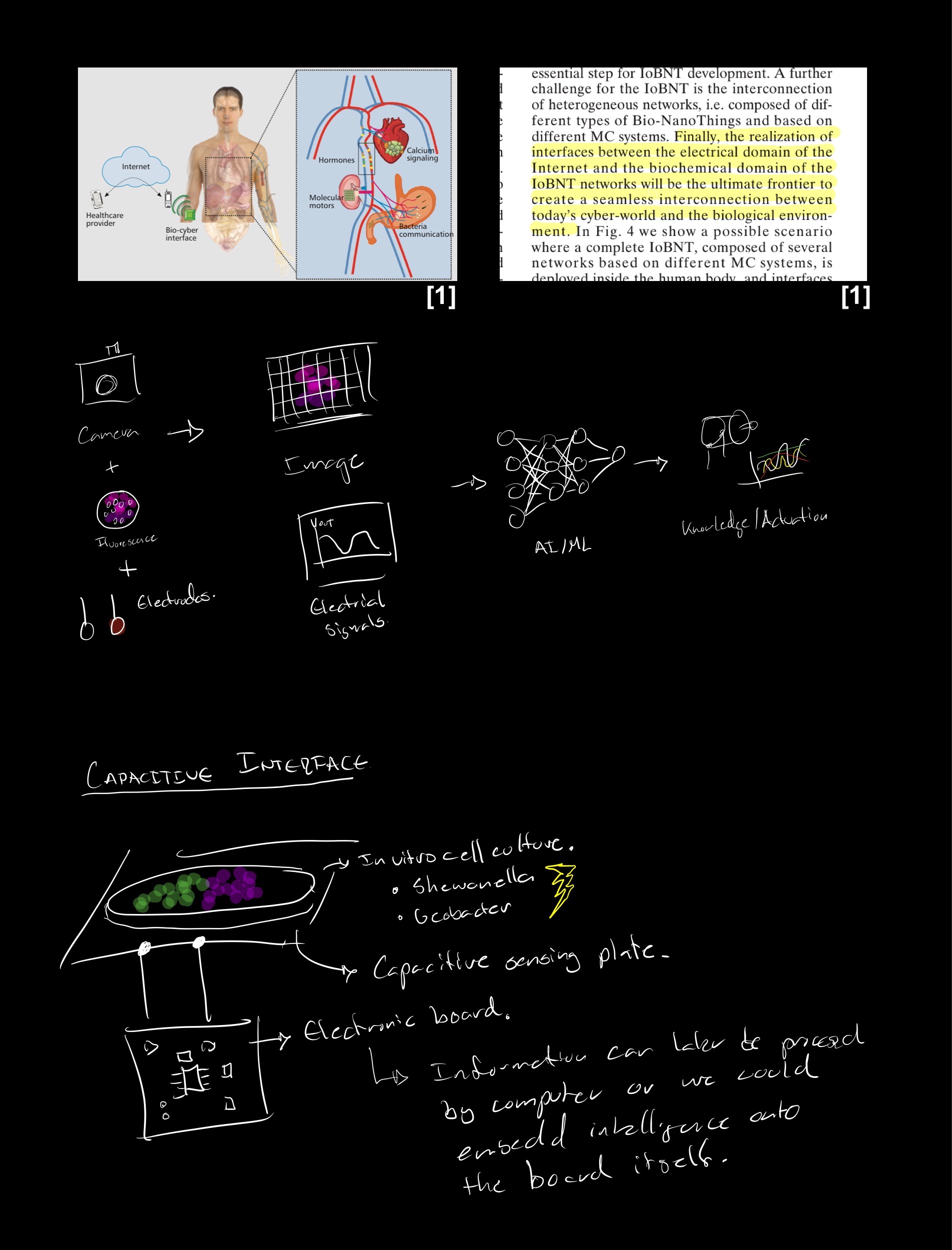
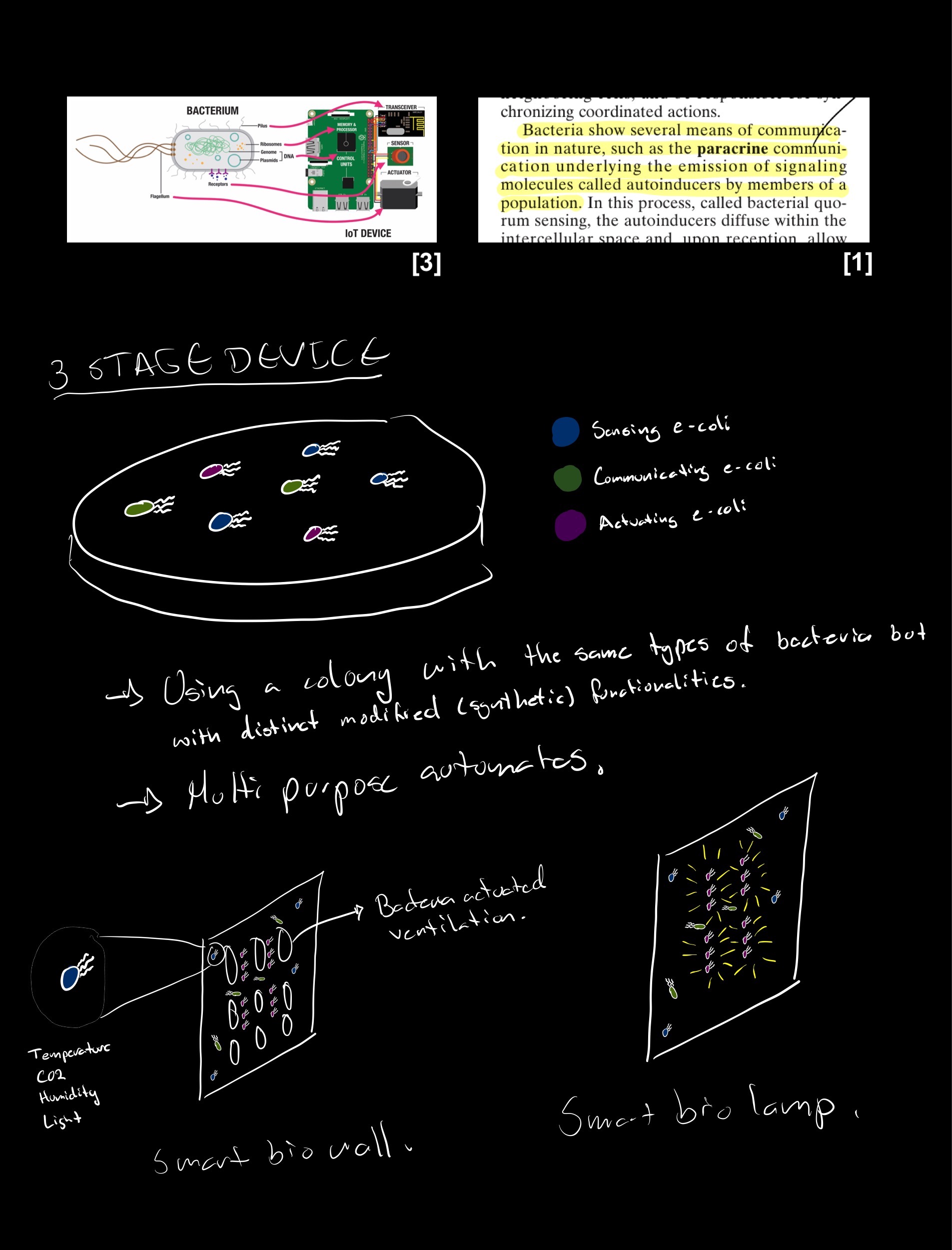
Bio Microphone
Monitoring sound pollution within cities. Sound pollution can have a big impact on the quality of life for urban dwellers. It has been a big intrest for companies and governments to create sensors that are able to help officials monitor the sound pollution within public spaces in cities. Monitoring sound usually requires measuring vibrations or sound waves that could be taken as something that invades the privcy of communities, specially if they are going to be used within public spaces.Some studies have proven that there are some genes that express more or less depending on the exposure that they have to different sound frequencies. Specifically, a gene that encodes for aldolase (ald) can be regulated by certain frequencies (50Hz - 200Hz). It would be interesting to tag that gene along with one of the color AMILCP proteins that we used in class so that when expressed we would be able to note the difference in how they are growing deending on sound thourgh analysis of colonies or maybe even through the use of a low cost color or light sensor. The device can act as a bio encrypted sound sensor. We would be able to know exposure and types of frequencies that were present and therefore could extract some information from the quality of the environmental sound.

Todo's Outline:
- Replicate growth experiment with different sounds and frequencies.
- Make light sensor case for analysing color. (Ask Eyal for some examples to see if light reading change with having different colors and population densities).
- Test if expression of the gene is promoted by sound and if we can have changes in color indicate expression.
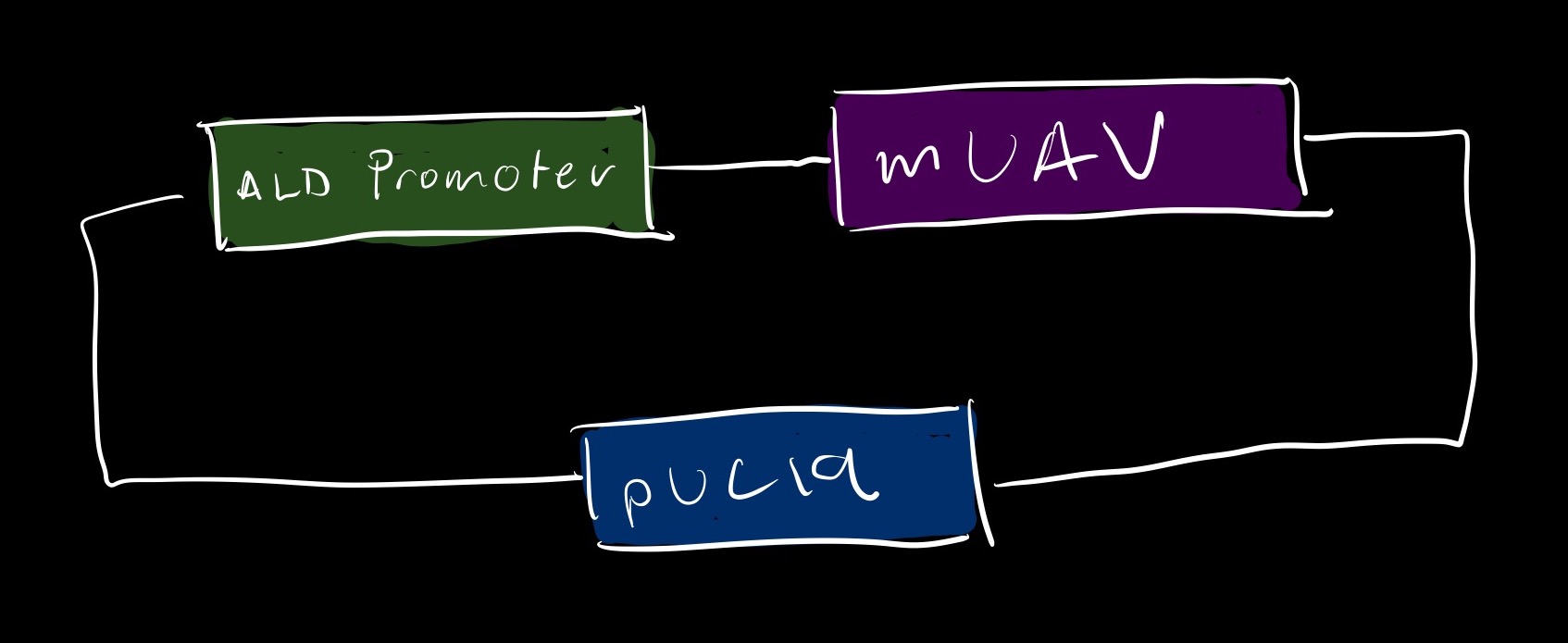
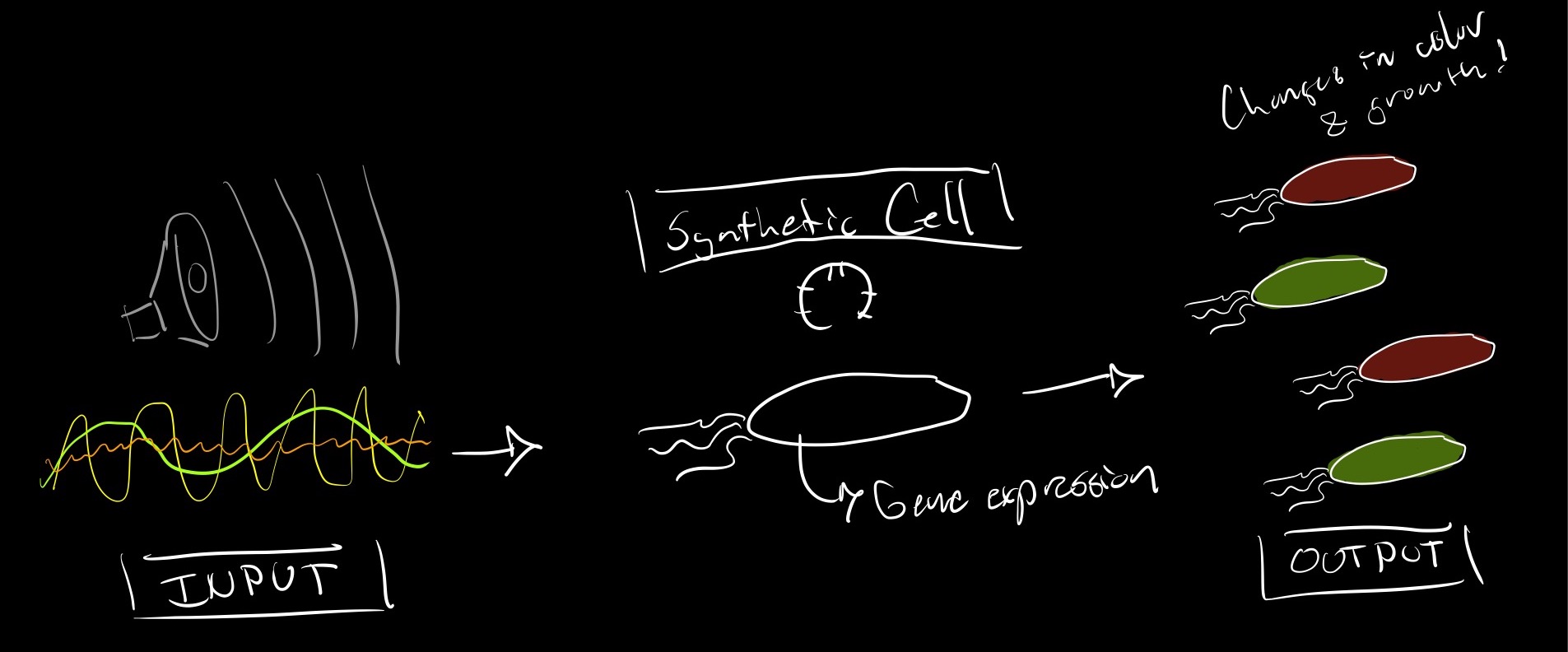 The gene used on [4] is composed of a mixture of the gene that encodes for ald and a GUS reporter. Similarly, I believe that I could mix the ald gene with amilCP to see expression induced by sound. below is a survey of the publications available that talk about
sound having an impact on gene expression or bacterial growth. The list is not exhaustive but contains some of the best publications found that showed work that can be carried out within the context of HTGAA.
The gene used on [4] is composed of a mixture of the gene that encodes for ald and a GUS reporter. Similarly, I believe that I could mix the ald gene with amilCP to see expression induced by sound. below is a survey of the publications available that talk about
sound having an impact on gene expression or bacterial growth. The list is not exhaustive but contains some of the best publications found that showed work that can be carried out within the context of HTGAA.
- Rice Plants -> Gene that Encodes for ALD + ald promoter-specific primer set + GUS reporter. [1]
- Standard E-coli + sound treatment. [2]
- E-Coli K-12 + sound treatment. [3]
- Razor Clams -> TCA Cycle -> 6-phosphofructokinase-1 - pyruvate kinase [4]
- Sound proteins -> TMC1 protein makes electrical signals when stimulated by sound. [5]
- Tomatoes -> The expression level of several ethylene biosynthetic (ACS2, ACS4, ACO1, E4 and E8) and ripening-regulated (RIN, TAGL1, HB-1, NOR, CNR) genes was influenced by sound wave treatment. [6]
- Hamster Ovary Cells -> Does not use a specific gene but a complete gene circuit that converts mechanical strain to GFP.
Addgene and Biobricks are a great supply for plasmids that have already been programed to express a certain fucntion. With this in mind, I will look into these resources to see if I can find parts that already have a function related to envrionmental sensing. Building a device that can use one of the parts that are already available and encasing it in a platform that can help the cells survive on the area of deployment, weather outside or inside a building would be of great interest. A conversation with Pat made me realize that building the interface with which you can apply existing parts into new use cases is valuable as a research project and as a contribution to the synth bio field. With this in mind, I will see if I can find parts related to sound, If I cannot, I will try to look for other interesting sensing applications within the context of knowing new infromation about the built environment.
E.coli cell incubator?
Thinking about ways in which I can set up an experiment to use ecoli as a sensor I thought that I would have to build a device that could maintain proper conditions for an ecoli culture so that I could then analyze it. I thought that a portable incubator that allows for different types of experiemnts could be a great idea for Aim 1 of my project. This portable device could be used for two main objectives. (1) Increasing the scope at which synthetic biology experimentation can be carried out and (2) allowing for sensor deplyments to be carried out in order to test gene circuits for envrionmental sensing. The device would use peltier as a way to heat up the petri dish and a temperature sensor to maintain the dish at the optimal temperature for bacterial growth. On the top of the device we could have modules that can be attached for live monitoring like a light sensor, cameras or other types of systems. The other systems could then be connected to a d igital interface that would allow us to monitor thew results that the culture is getting in deployment. This can allow for quick exprimentation and longer term deployment of experiments outside of the wetlab. Possible aims would be structured as follows:
- Aim 1 - Enable bacterial growth on portable device. -> Test fucntion within office room and in the outside.
- Aim 2 - Show bacterial growth with sensor. -> Bio microphone example. (light? particles?)
- Aim 3 - Explore possible environmental sensor applications for the device.
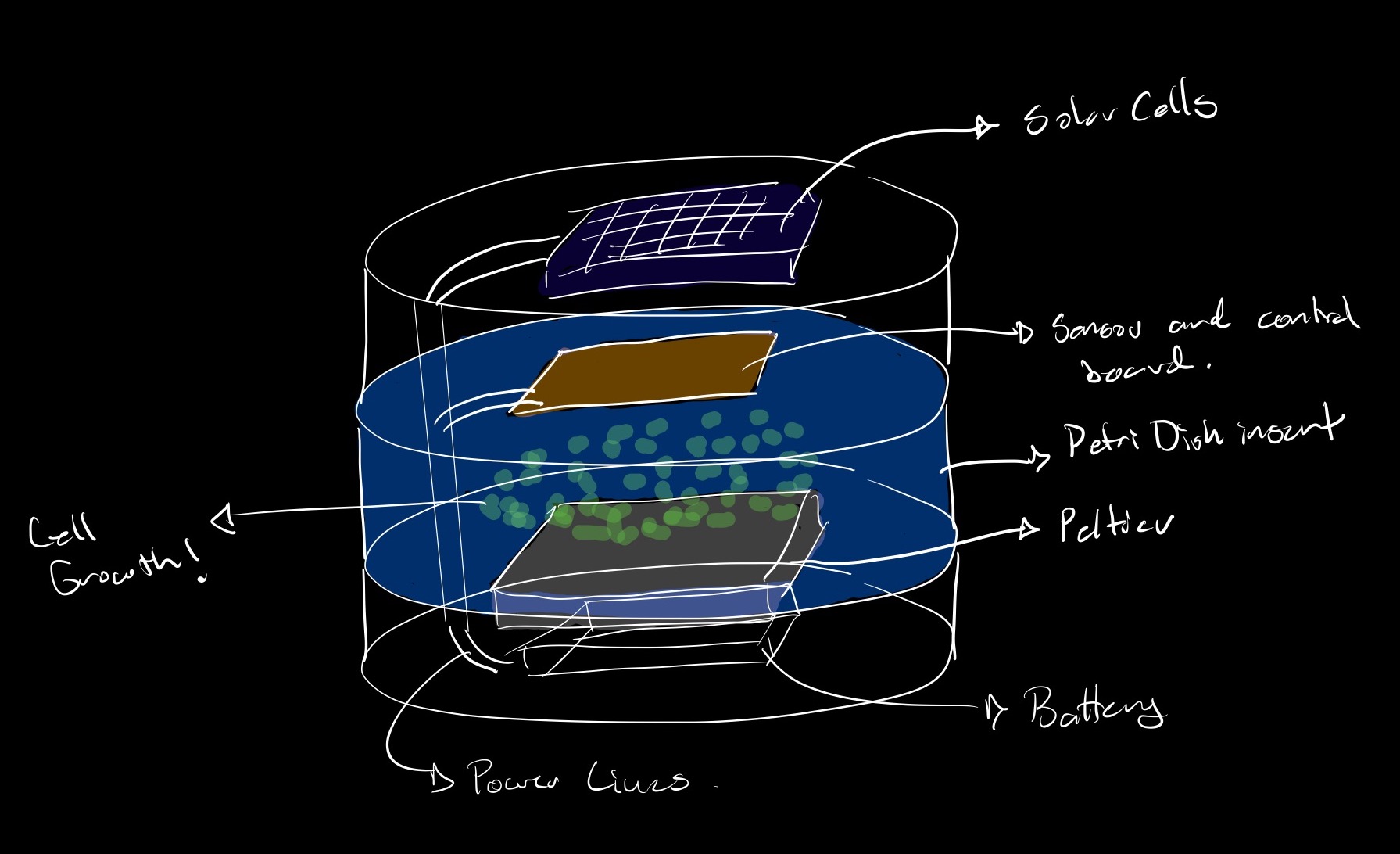
I have started the construction of the device. I first started by designing the pcb board that wiull run the whole thing. I then manufactured it and tested it out. Evrything seemed to be working ok!
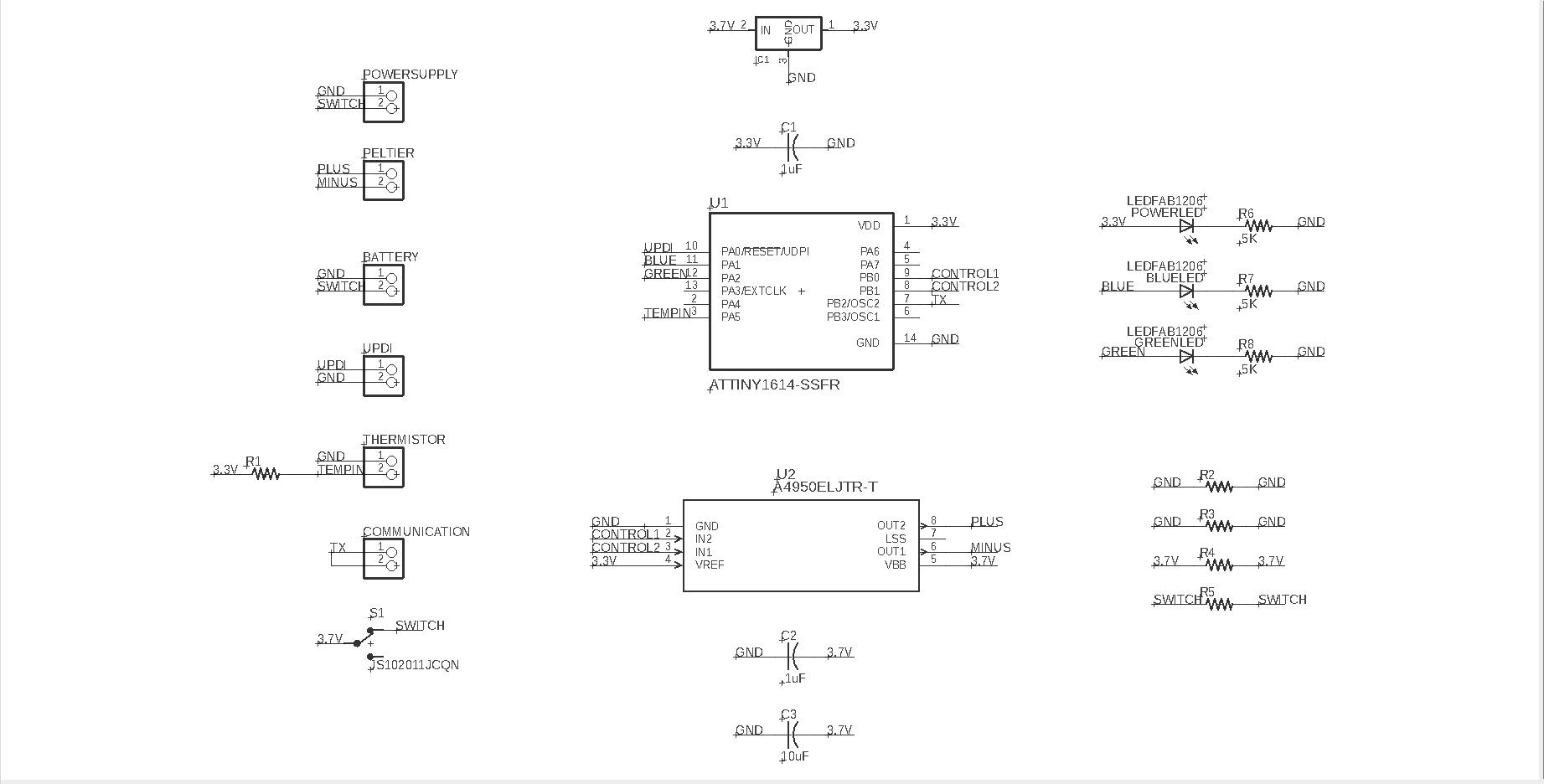
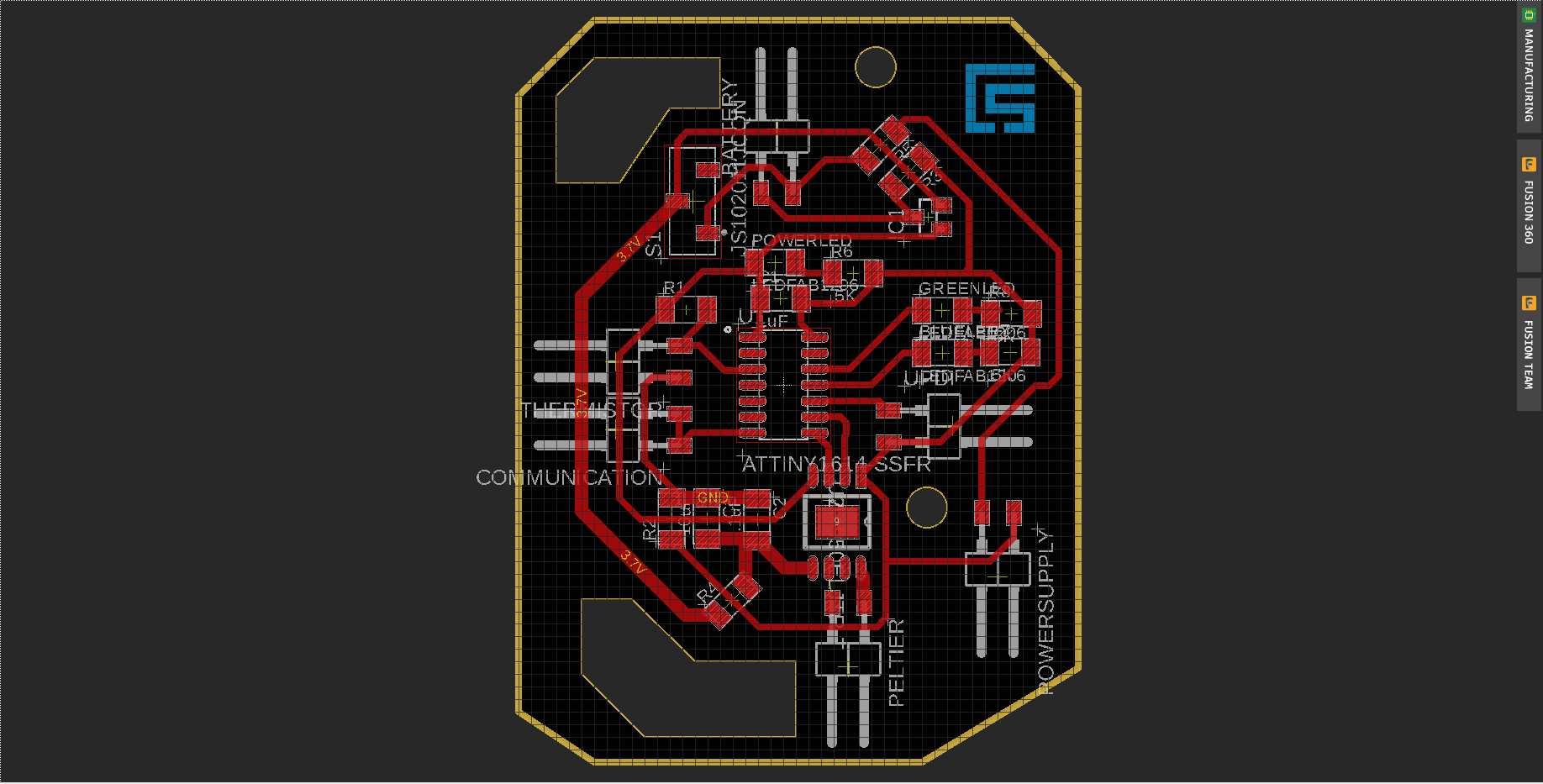
I then went on to design the stacked device casing. The design can allow for customization of the uppermost layer to add different types of experimetns or cultures. The idea would be to give it the capability to grow static and dynamic systems through the use of microfluidic plates.
And, it works!! At least on the electronics side. I will upload more photos and videos after but here is a glimpse at the most basic version of the device.

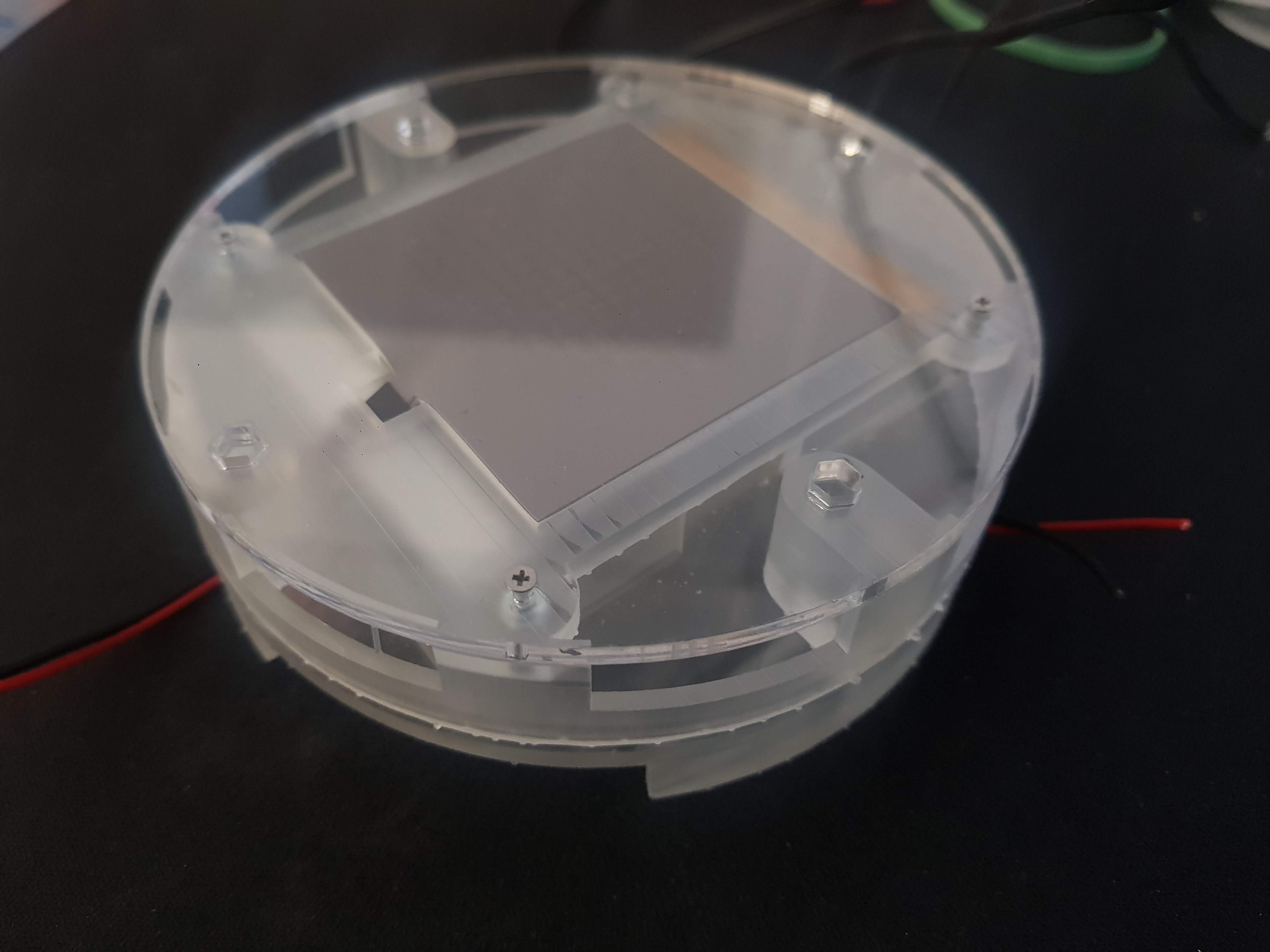

The first aim for my project is to test out bacterial growth and gene expression regulated through sound. For this I will be carrying out a wide range of experiments that involve having bacteria cultures exposed to different frequencies and signal amplitudes. In order to make different experiments that can be carried out within an incubator or outside of it, I have deviced a little speaker system that can stimulate with mono signals at different intensities and frequencies. Below is the design of the board and a little demo video of the device.

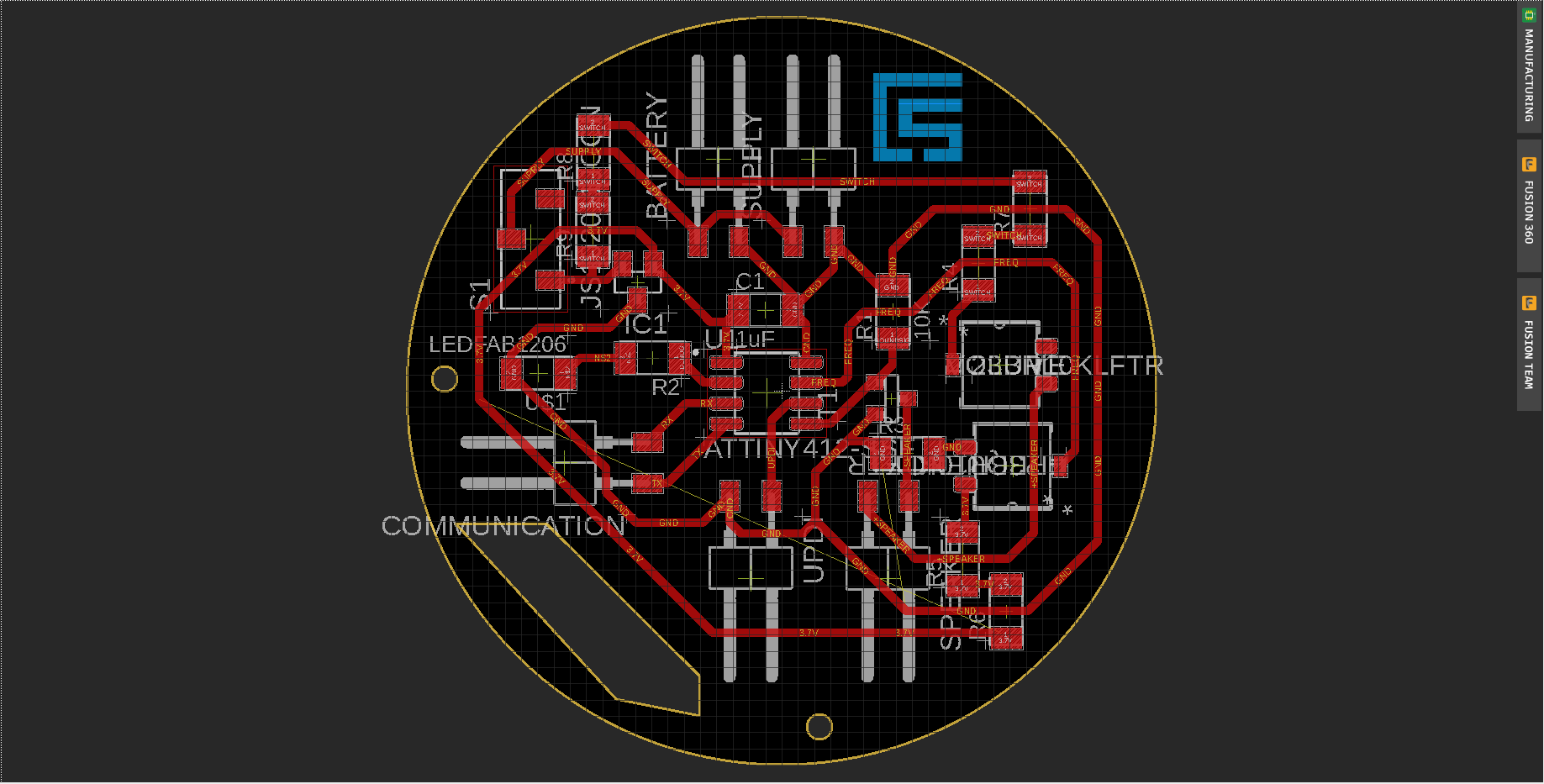
You might need to toggle controls to turn on the sound on the video. I just switched it off because it can be a little annoying.
I've also made a little mount for the board to be attached to the speaker. This will avoid any bad connections or issues that could come from vibrations or bad stability of the board when carrying out my experiments. I will be printing it out to test if everything fits properly.
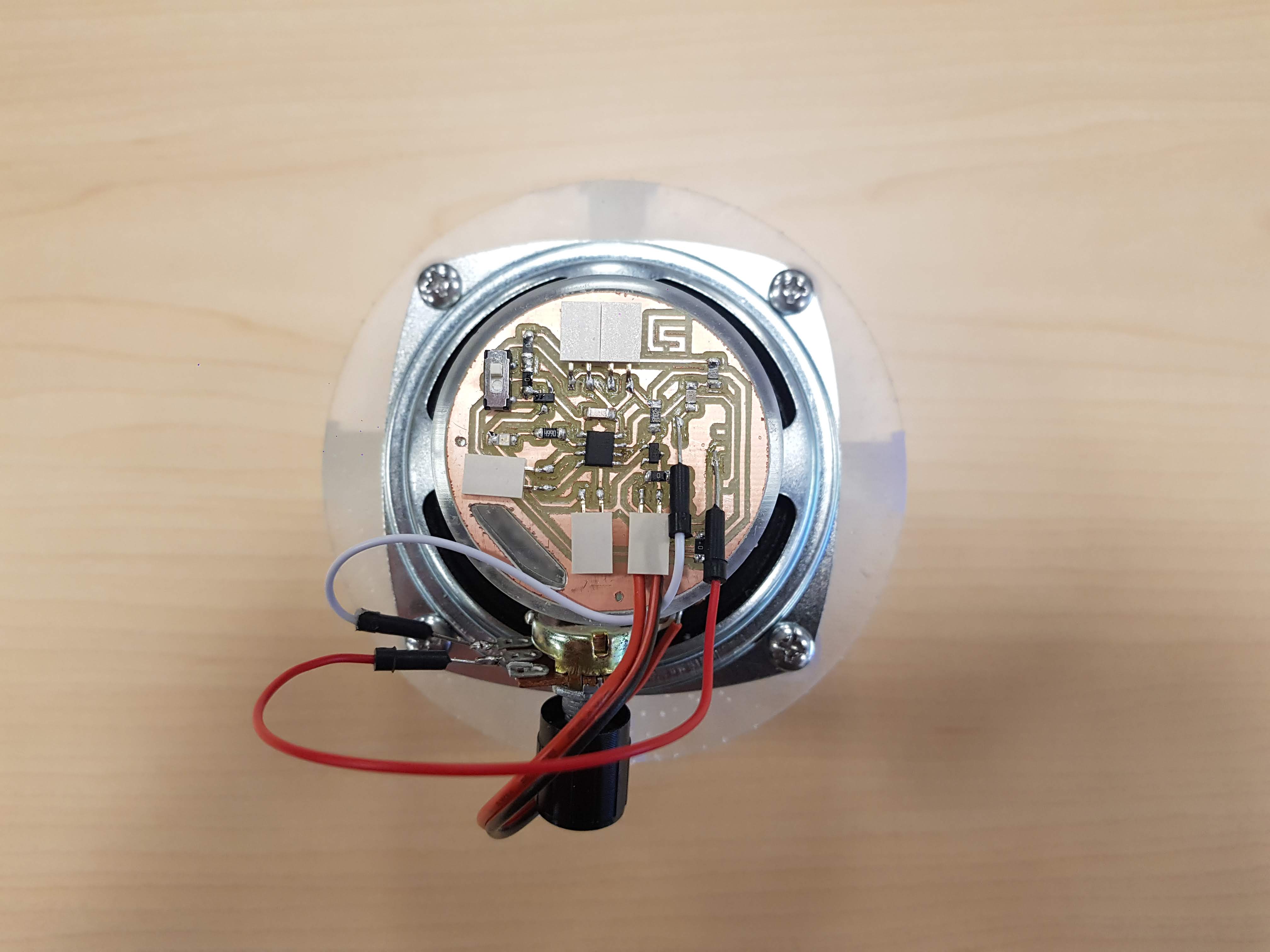


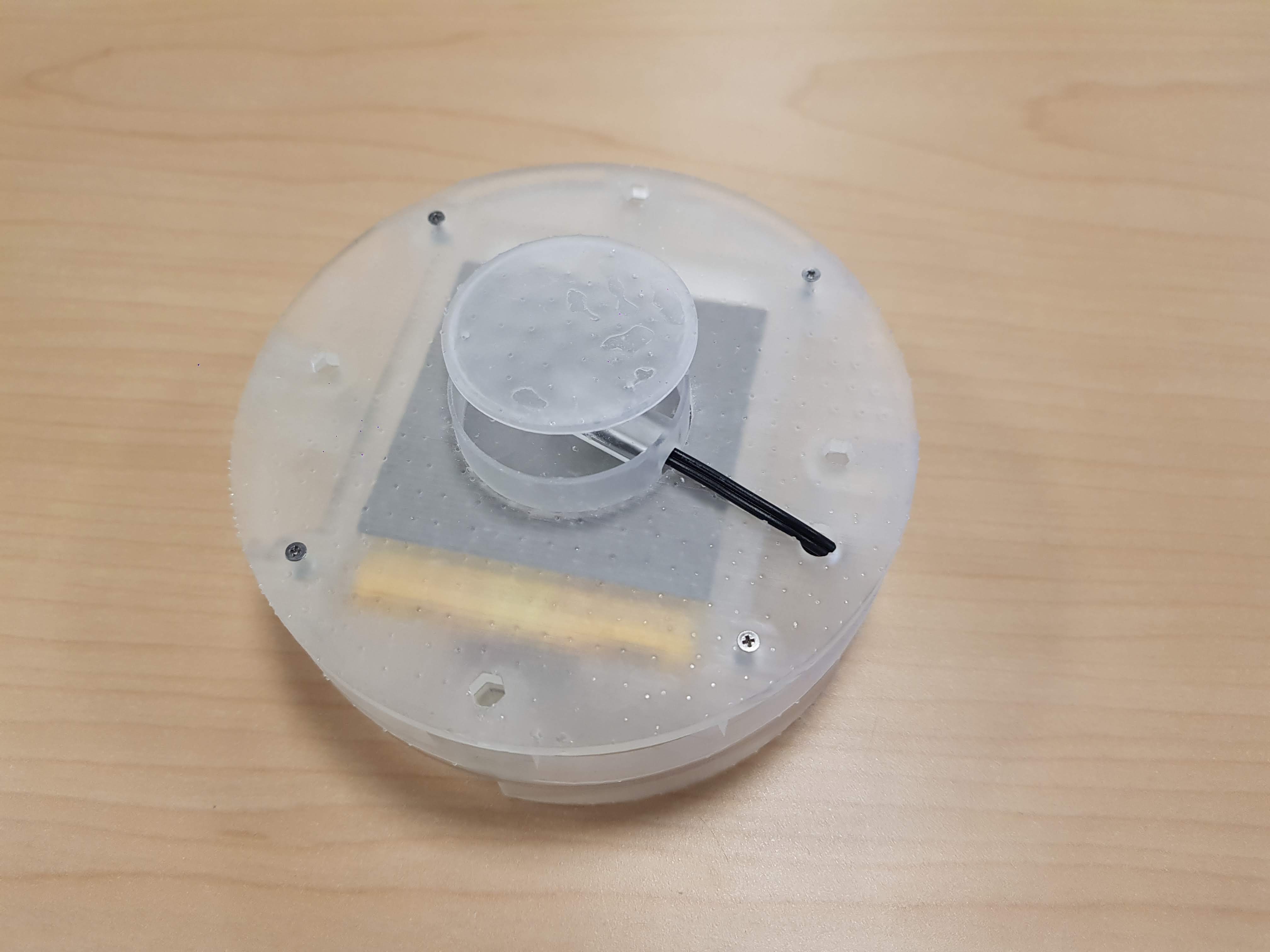



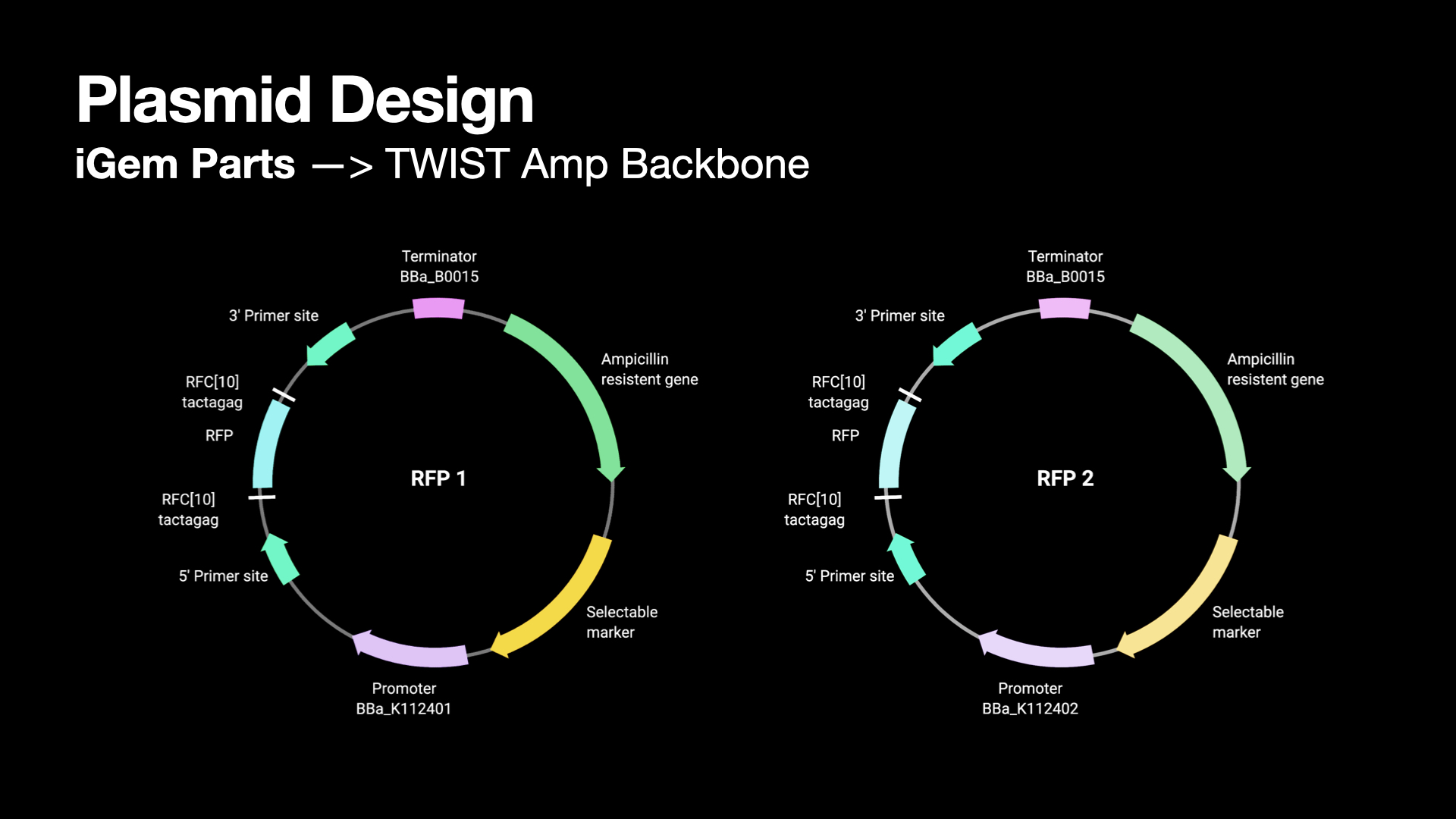
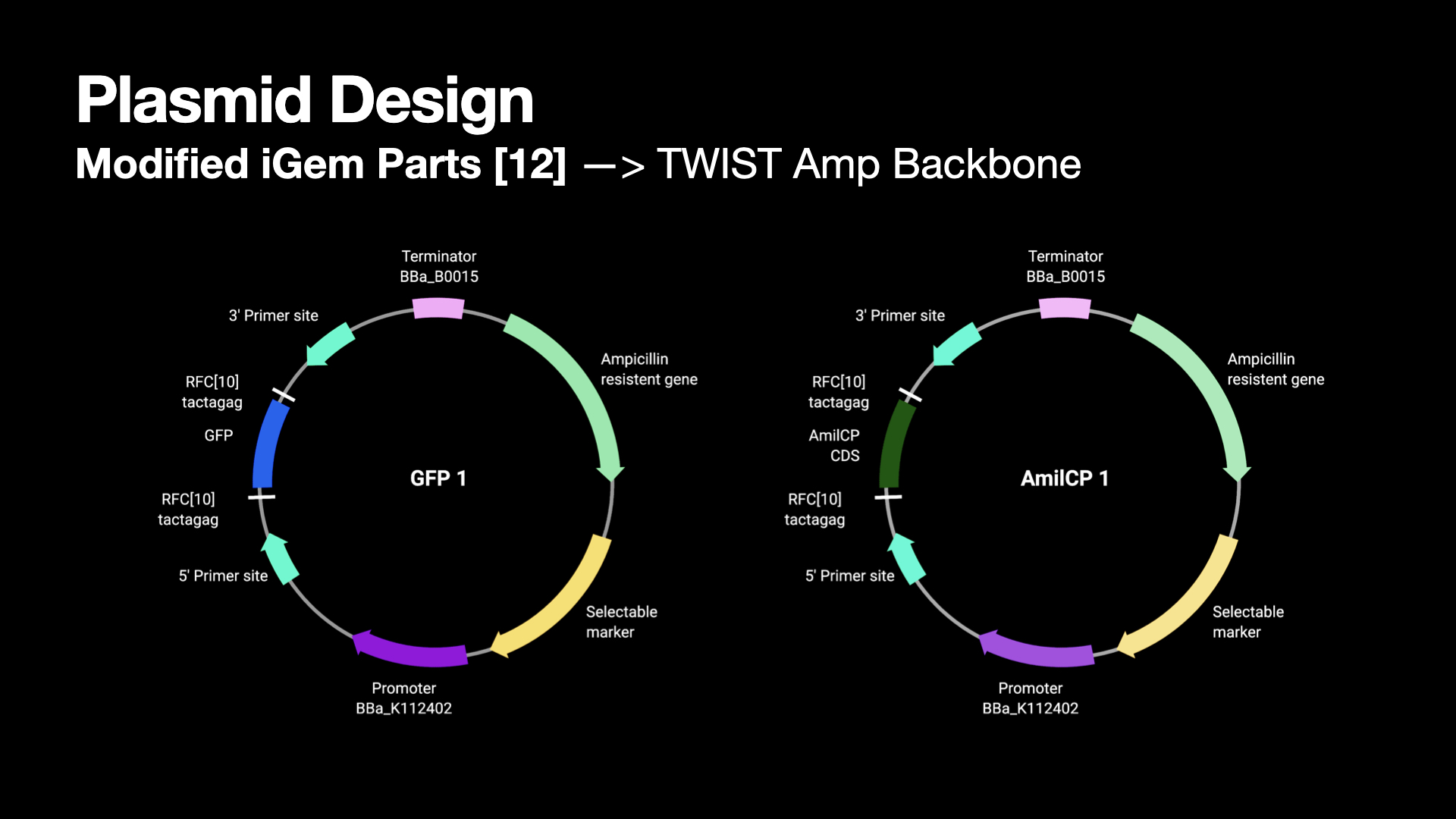


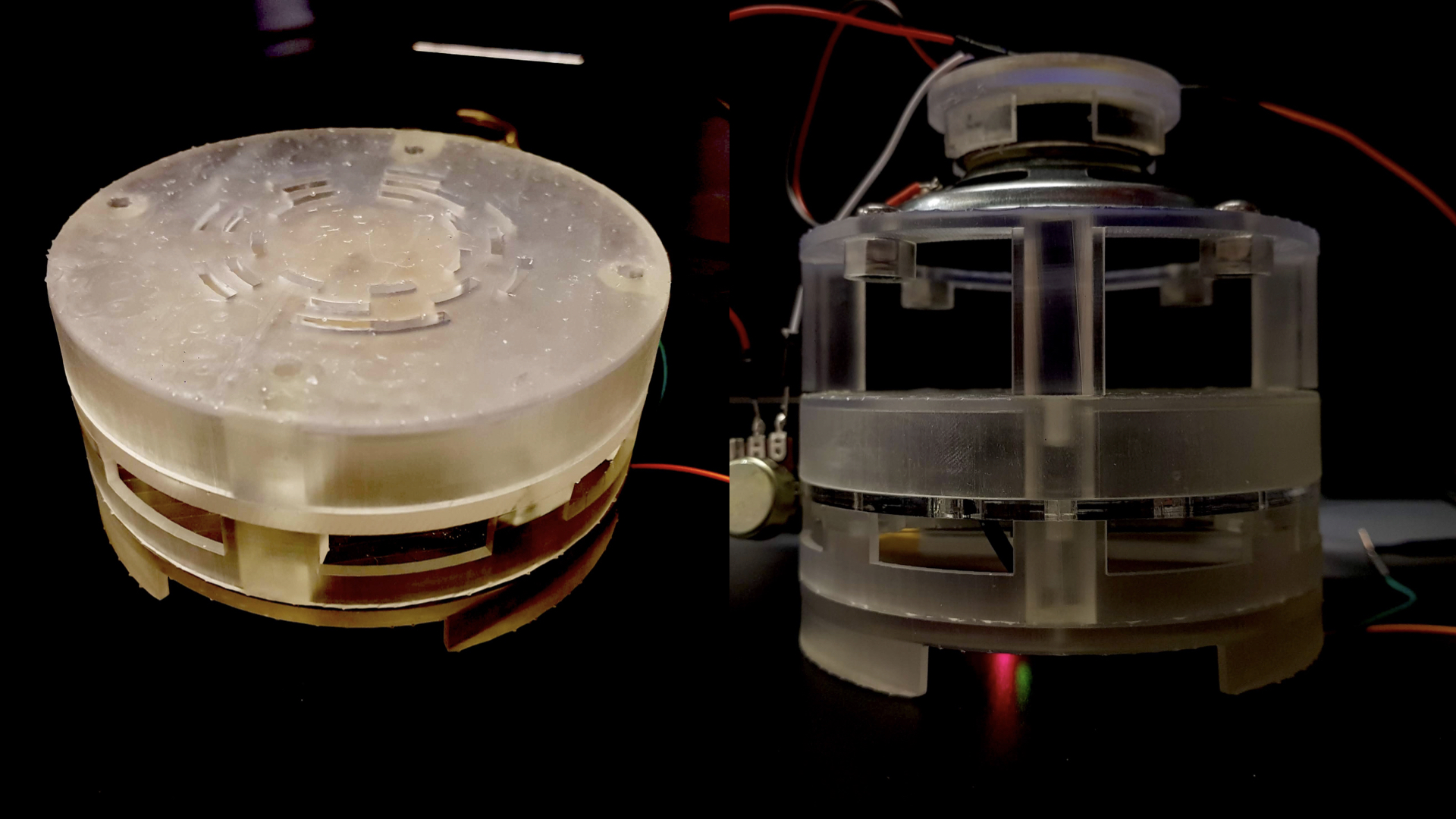
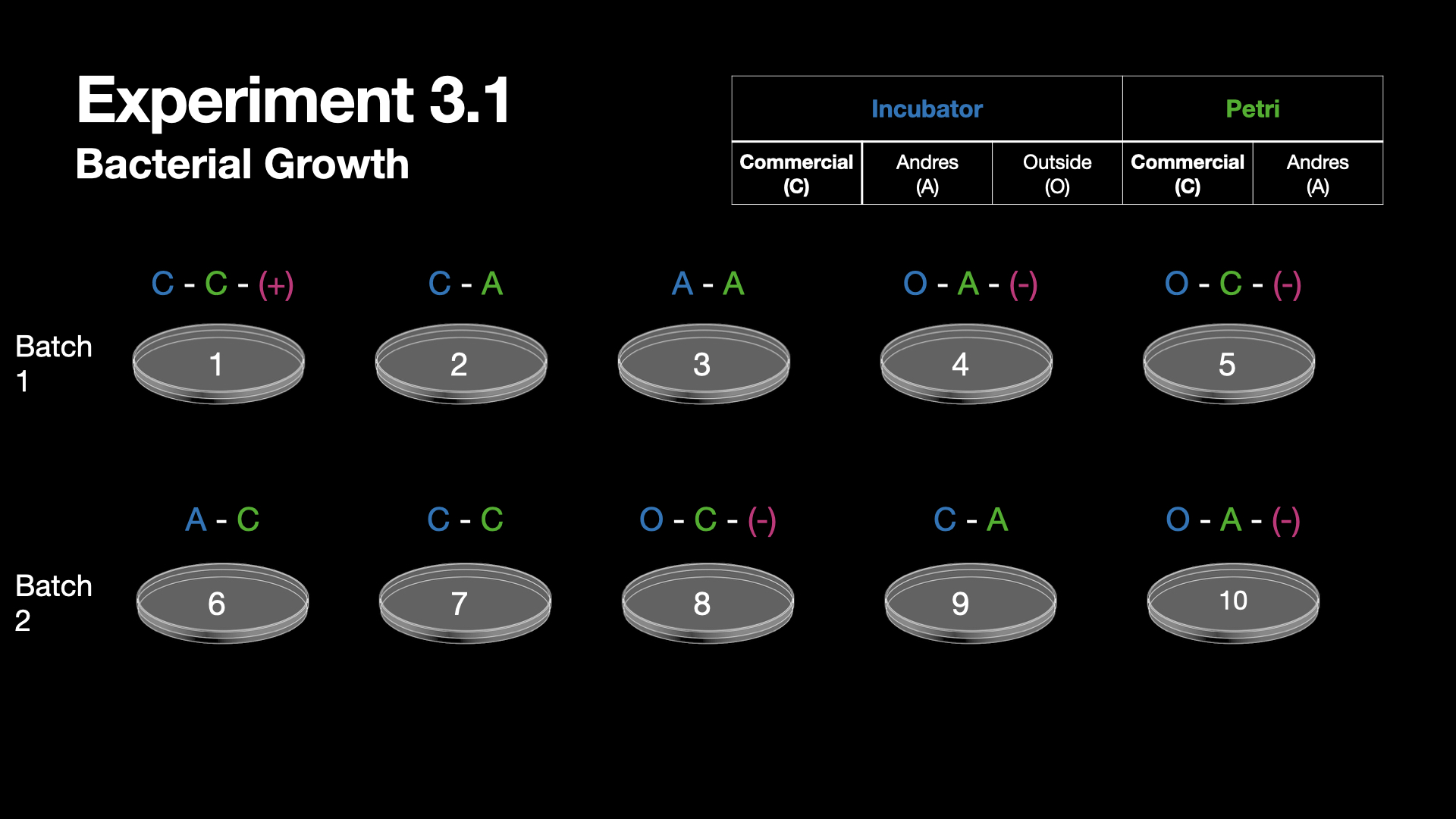

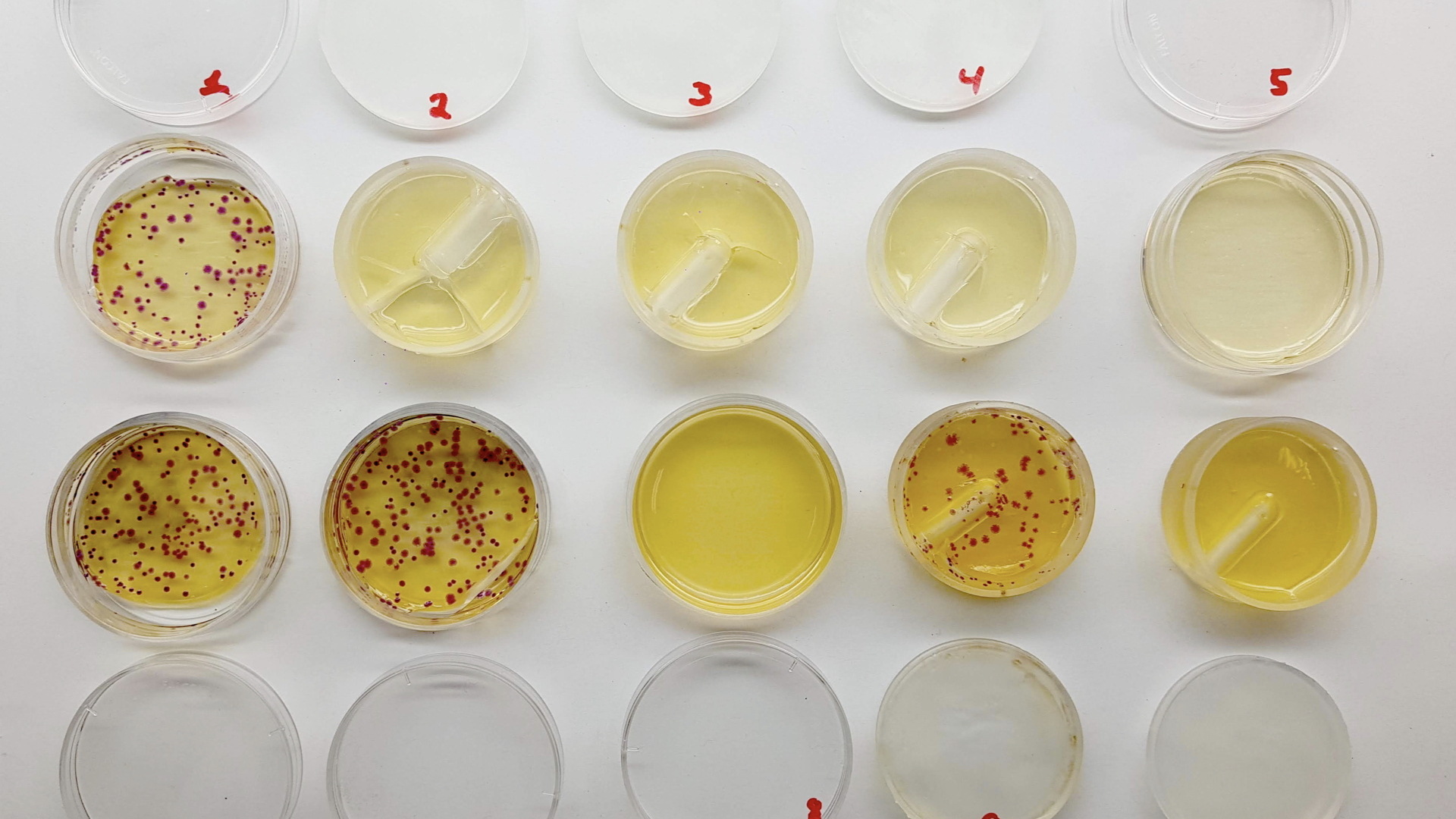
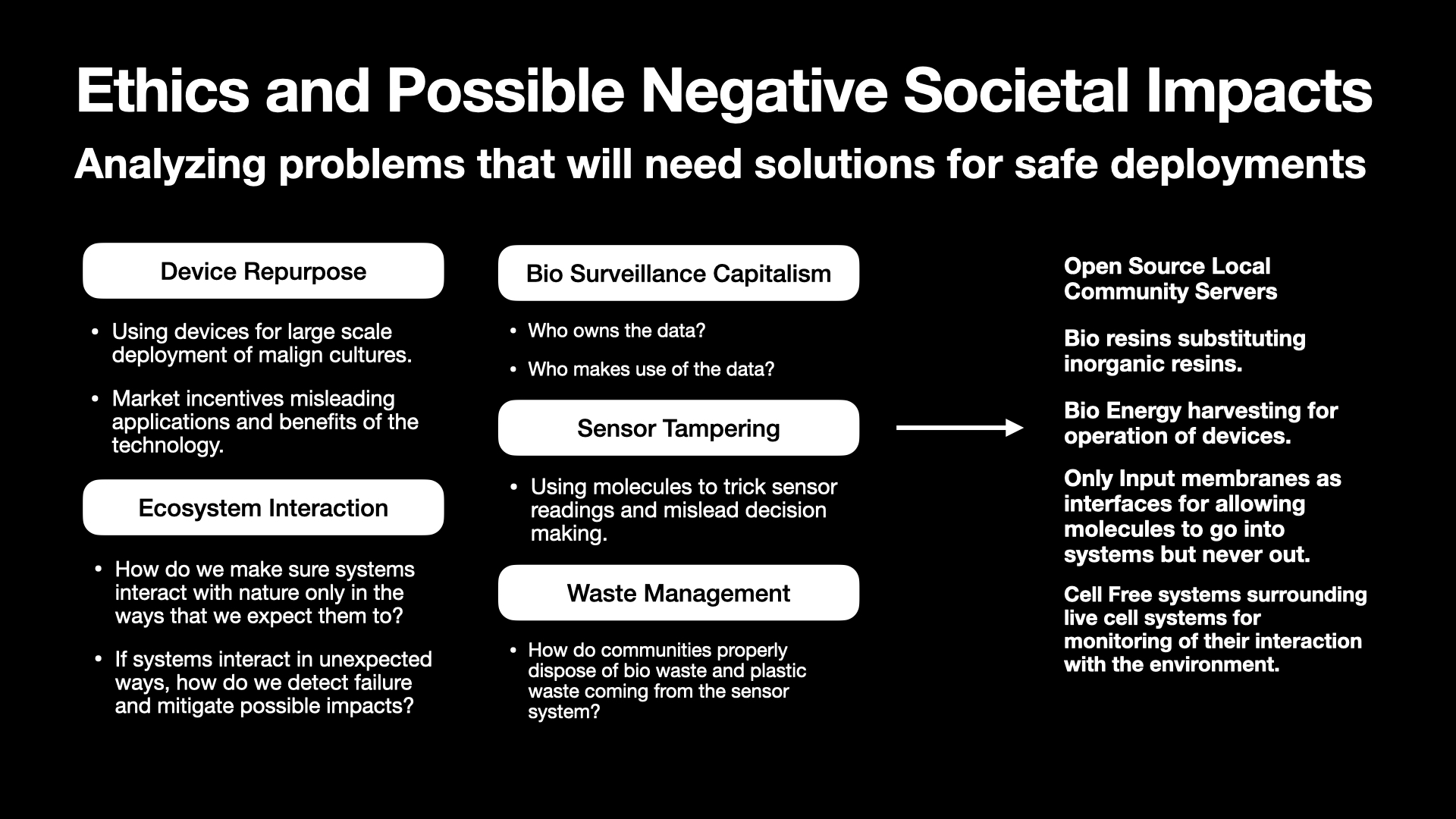

Refrences:
- [1] Akyildiz, Ian F., et al. "The internet of bio-nano things." IEEE Communications Magazine 53.3 (2015): 32-40.
- [2] Pataranutaporn, Pat, et al. "Living bits: Opportunities and challenges for integrating living microorganisms in human-computer interaction." Proceedings of the Augmented Humans International Conference. 2020.
- [3] Kim, Raphael, and Stefan Poslad. "The thing with E. coli: Highlighting opportunities and challenges of integrating bacteria in IoT and HCI." arXiv preprint arXiv:1910.01974 (2019).
- [4] Jeong, Mi-Jeong, et al. "Plant gene responses to frequency-specific sound signals." Molecular breeding 21.2 (2008): 217-226.
- [5] Gu, Shaobin, Yongzhu Zhang, and Ying Wu. "Effects of sound exposure on the growth and intracellular macromolecular synthesis of E. coli k-12." PeerJ 4 (2016): e1920.
- [6] Murphy, Mark F., et al. "Acoustic vibration can enhance bacterial biofilm formation." Journal of bioscience and bioengineering 122.6 (2016): 765-770.
- [7] Acuña‐González, Edgar, David Ibarra, and Jorge Benavides. "Effects of sound elements on growth, viability and protein production yield in Escherichia coli." Journal of Chemical Technology & Biotechnology 94.4 (2019): 1100-1113.